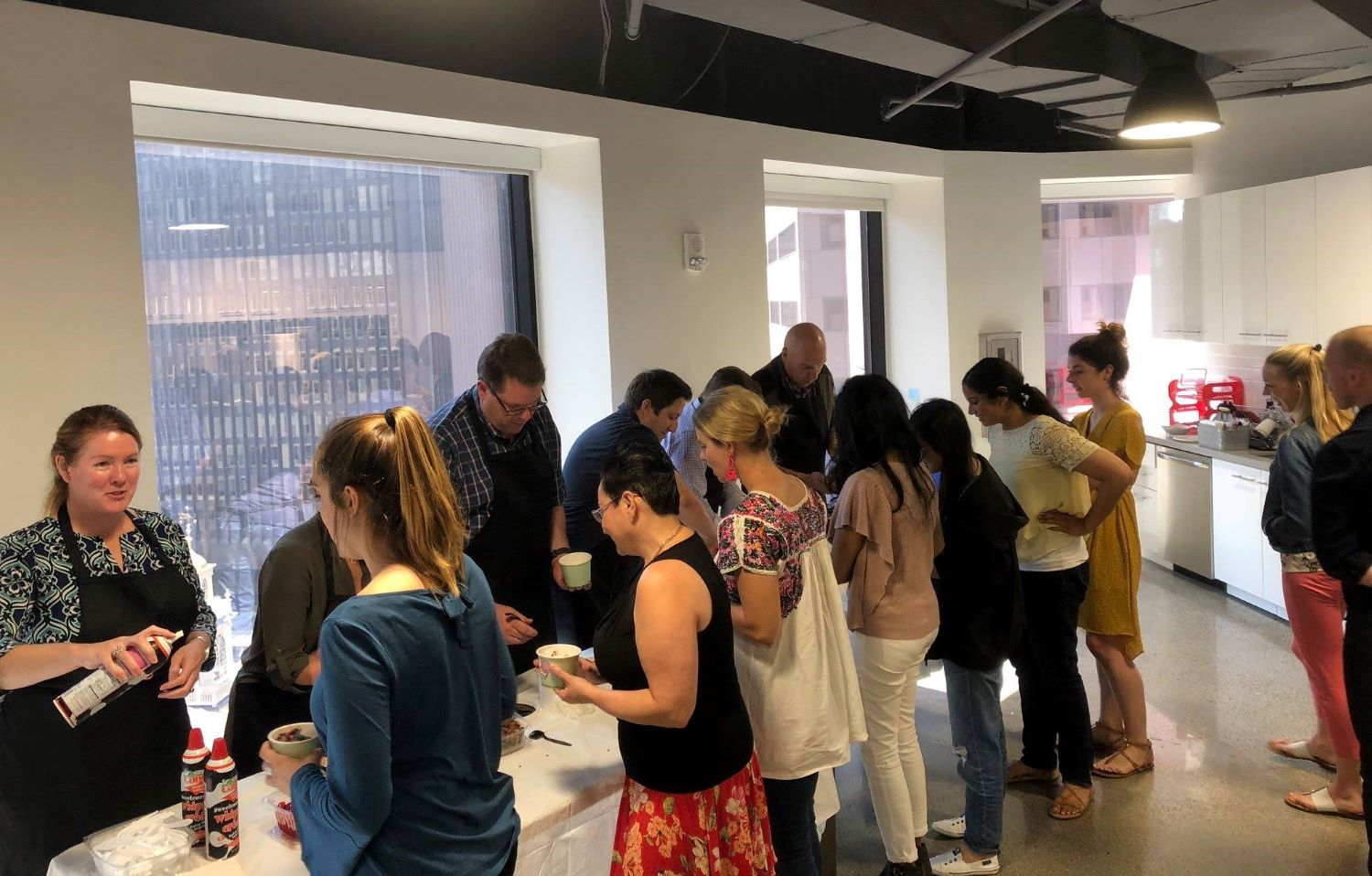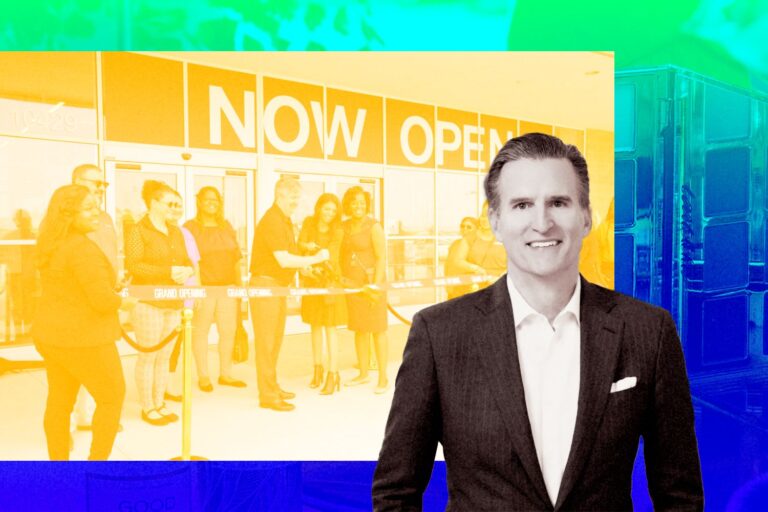True Fit’s Journey to Unleash Retail Potentials via Wise Personalization Schemes
Working with retailers and partners in North America, U.K. and E.U. markets, in addition to recent expansions into Asia and South America, like a plethora of other startups in the space, True Fit started out trying to solve the fit problem: how to be sure clothes you purchase online will actually fit you despite not bring able to try them on before making a purchase.
An Effort to Satisfy Customers in Retail Industry
The idea for True Fit emerged out of a shopping experience gone horribly wrong. One day, Jessica Murphy received an email from her friend, Romney Evans. The story began when he told her a frustrating story of shopping with his wife. At the end, this man invited her to join him in trying to solve the frustrating process of finding clothes that fit and flatter.
At the time, Murphy was in graduate school with experience as a buyer in the retail industry. Her conversation with Evans sparked an interest. She knew they could change the game for consumers and for the industry with a simple value proposition: help people find and buy clothes and shoes they would love and want to keep. It is a concept of using data and technology to match a consumer with a set of preferences to styles from mass-produced products.
As a buyer at the May Department Stores Company, which was acquired by Macy’s, Murphy realized that the one thing that plagues retail is lack of advanced analytics. That is why she transitioned from working in retail to building the first-of-its-kind data-driven personalization platform for the retail industry.
“Retail has never been first with adopting technology,” explains Murphy, “let alone advanced analytics. I got to the point as a buyer that I was feeling frustrated by the way we were making decisions and that we weren’t trying new things, so I began applying to graduate schools. I thought business school would be the place for me to figure out what I wanted to do next.”
After enough time on the work force and in business school, the two friends were ready to go “all-in” with True Fit. They threw everything they had at the idea — including $5,000 in repurposed student loans — and chose to forgo the typical post-MBA route. It paid off. True Fit came into its own as one of the first data platforms for enhancing style and comfort in the retail clothing experience.

Prominent Technology Strategy: Advanced Analytics Is the Key
How True Fit works is that: on retailers’ website, when consumer sees things that they are interested in, they will go to the product detail page and see a link called “Find your true Fit”. That is where they come in. Through a series of questions, True Fit guides the customer to what might be a better fitting shoe or clothing for their body type and provide a personal fit rating and size recommendations.
To do this, the company built out a data platform, which is essentially matched the data of clothes customers have already purchased with ones they are considering buying. The sell to retailers was that increased confidence that an item will actually fit can pull their purchase over the line and reduce returns, which remain a costly part of online retail.
At the core of True Fit is massive amounts of data and using AI and machine learning to process this data to personalized recommendations for individual shoppers. However, as True Fit’s CEO, William R. Adler, explained, the company has also expanded its offering to be a broader data-driven platform play that goes beyond fit to go much deeper into offering personalized recommendations for apparel and footwear.
Based on customer’s ever-evolving purchase history — as a means to encourage them to make further purchases, this company also recommends engine offered up via an API to help retailers “better personalize all touch-points of the consumer journey.” This includes search, email marketing, retargeting, and in future chat and voice applications.
The same True Fit data can also be used to provide rich analytics and insights to enable retailers and brands to make smarter merchandising, marketing, and manufacturing decisions, says Adler.
What Secret Stands Behind True Fit Expansion?
“We dramatically improve a person’s chances of success anytime they’re making a decision related to apparel and footwear,” said Evans. Whether you’re a consumer seeking style inspiration, or a marketer, merchandiser, sales associate, or clothing designer aims to delight consumers relevantly and personally, True Fit’s Platform can help. So, what are the secrets that True Fit takes advantages?
#1. The Mainstream of Size Inclusivity
The demographic of midsize fashion shoppers is growing. Thirty-eight percent of global female True Fit users are midsize, including 39 percent of women in the U.S. and 42 percent in the U.K., according to the data-driven personalization platform for fashion retailers.
The growth of this size segment is prompting brands to think about size differently. In fact, according to the company’s data insights from nearly 200 million shoppers and 16,000 brands and retailers on the platform, True Fit revealed that most retailers now carry upwards of 90 percent of their catalogue in midsize ranges – a sign that the company says retailers are becoming more size-inclusive. As a growing category in the U.S., the percentage of midsize sales increased from 52 percent in 2020, compared to 44 percent in 2017.
“Size inclusivity has long been an issue that fashion has struggled to shake, but the rise in midsize shoppers — a new cohort which is now blurring the lines between traditional standard and plus sizes — is paving the way for a more diverse ranging and greater accessibility to styles for all sizes,” said Sarah Curran-Usher MBE, MD EMEA at True Fit.

“It has also prompted retailers to take the opportunity to serve an as yet untapped demographic, which has so far been ‘unseen’ by the industry — creating a valuable new segment. And that means the onus is on fashion retailers to be able to track and react to insights from these macro data trends in order to continue to evolve their offer to meet their customers’ needs.” – She added.
As more retailers look to better address the midsize segment, Jessica Murphy, cofounder, and chief customer officer at True Fit, said, “the first step, before you can address any adjustments to sizing or size ranges, is to make sure you truly understand who your customer is and how they shop.” That’s what True Fit offer.
#2. The Psychology Around Behavior
The real kind of motivation behind True Fit’s success was really simple. There are millions of products produced every year, so is the number of purchases. As consumer has a set of preferences and a set of likes and dislikes; True Fit ought to make it easier to match up those things.
“And by doing that, we found that the real way to do that was to understand consumer preference at a deep granular level and also understand all the products that are being produced in the world at a really granular level. And we’ve built this huge cross-market understanding of people, and what they like and don’t like.” – said Murphy.
The thinking about the retailers’ benefits connected with customers insight – which is considered as win-win relationship – is really where True Fit stems from. While a retailer typically understands what happens within their business, True Fit understand a consumer everywhere they shop, that it has visibility to. What this platform tries to do is connecting the dots of what a consumer says versus what they do.
“It’s really human nature. So much of what we’re trying to solve for is the psychology around consumer behavior. And that’s really what we’re trying to get at is the marrying of the two things. Tell us what you think you love versus what you continue to buy over and over again. And then how can we get you out of that comfort zone to get you more things that you’re going to love.” – Murphy said.
Focusing on Pain Point: the Long-Term Strategy
The pain point at the center of True Fit after all these years is to “help people find clothes and shoes they’ll love and keep.” It’s a broad stroke mission statement that speaks to how shoppers’ self-image is affected by the struggle to fit into inconsistent, unrealistic sizing. Perhaps it’s this human desire for affirmation, granted by True Fit, which has enabled it to grow to its current user base of over 100 million worldwide.
“The footwear and apparel retail industry has reached an exhilarating tipping point. Consumers are shopping online in droves, and retailers are engaging with urgency to personalize their experience and win this vertical.” – said William R. Adler, CEO.
True Fit knew it had to step up and help because it had the power to do so. It has successfully brought all the capabilities of its technology to life through in-store QR codes, and in-store app integrations where consumers can scan items, get their personal recommendations, and fit guidance. And it has been doing a ton of training for store associates, again, because they can’t interact the same way that they did before.
“So much has gotten disrupted overnight, and many of our retailers are just focusing on the basics like buy online, pick up in-store, and some of these other services that further blur the lines. And for us, our role in all of this was to figure out where we can insert guidance to help make up for some of the deficiencies that exist in the in-store environment today.” – said Murphy.

This company know customers in the way that retailers and brands can’t because they are extremely limited in their view of any given consumer. One of the things that it has opened up recently is its ability for its network partners to leverage its collective of consumers to help drive more qualified traffic. In other words, it is helping them find the people that are perfect matches for the inventory that they have.
“We are sitting on a wealth of information, and that interaction with the consumer is still at the center, but we knew that we needed to help retailers where they needed it the most.” – said Murphy.
That’s indeed the “pain point” that True Fit focus on. It is really expanded its offering for not only servers of consumers but also for service for retailers.
“This data collective allows retailers and brands, as well as an entire ecosystem of software providers, to combine their strength and leverage powerful, data-driven software to drive up results across the board. A massive virtuous circle has formed here with big benefits for retailers, brands, and consumers.” said Adler.
The Bottom Lines
By making restless efforts in understanding the market trend, True Fit leaders have done a good job of implementing various strategies to attract stakeholders. In addition to those proven success, True Fit also brings valuable lessons for business in retail industry.









